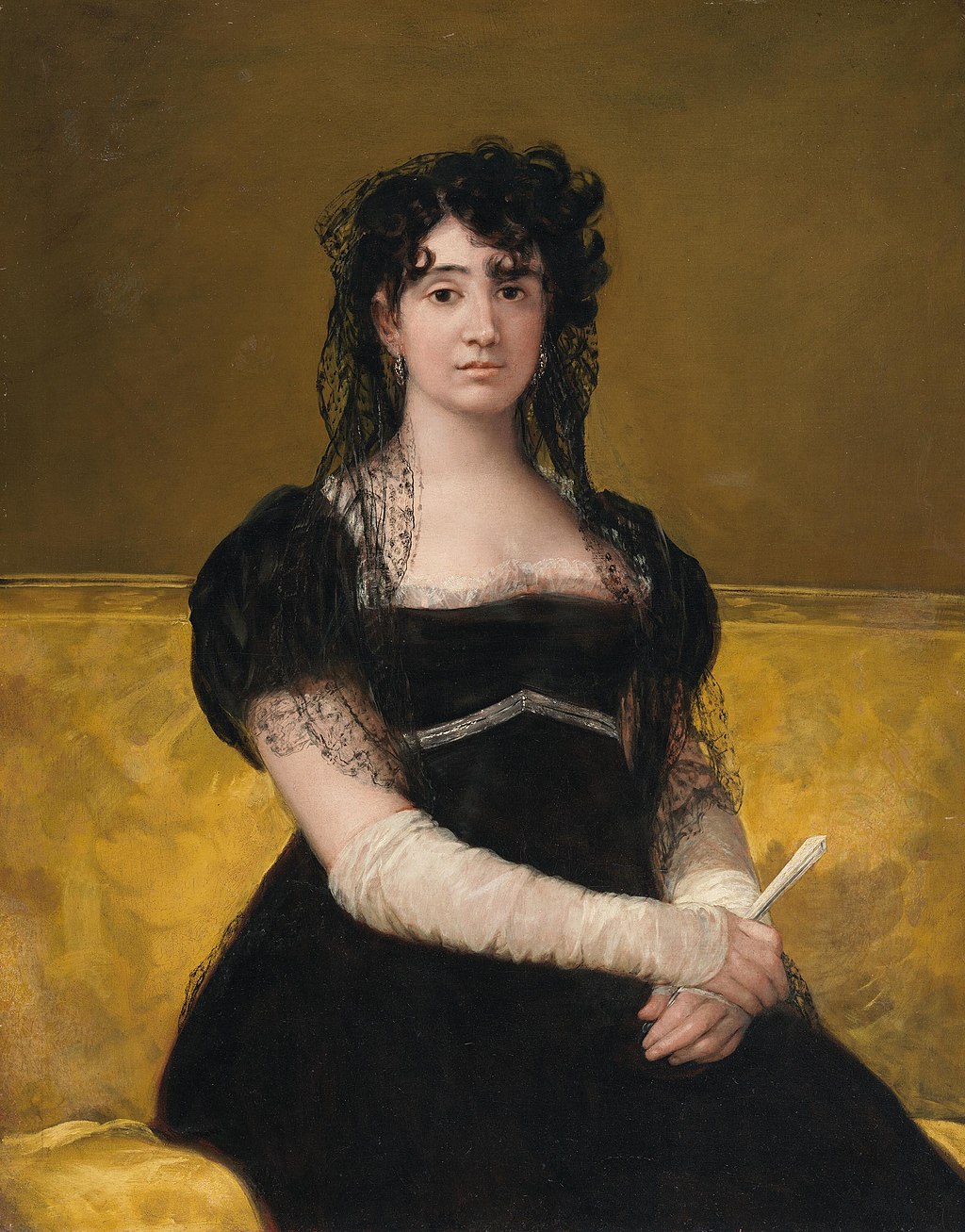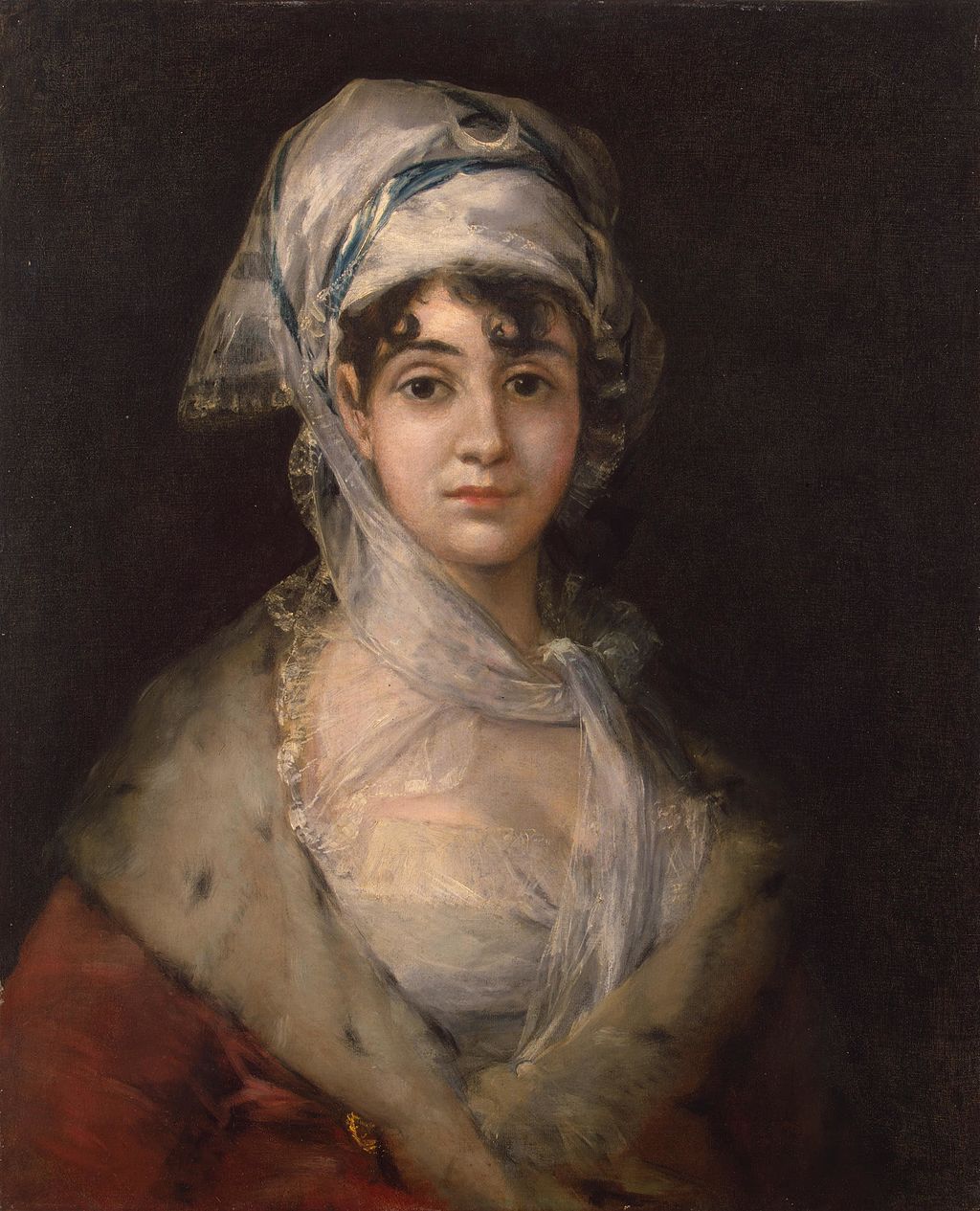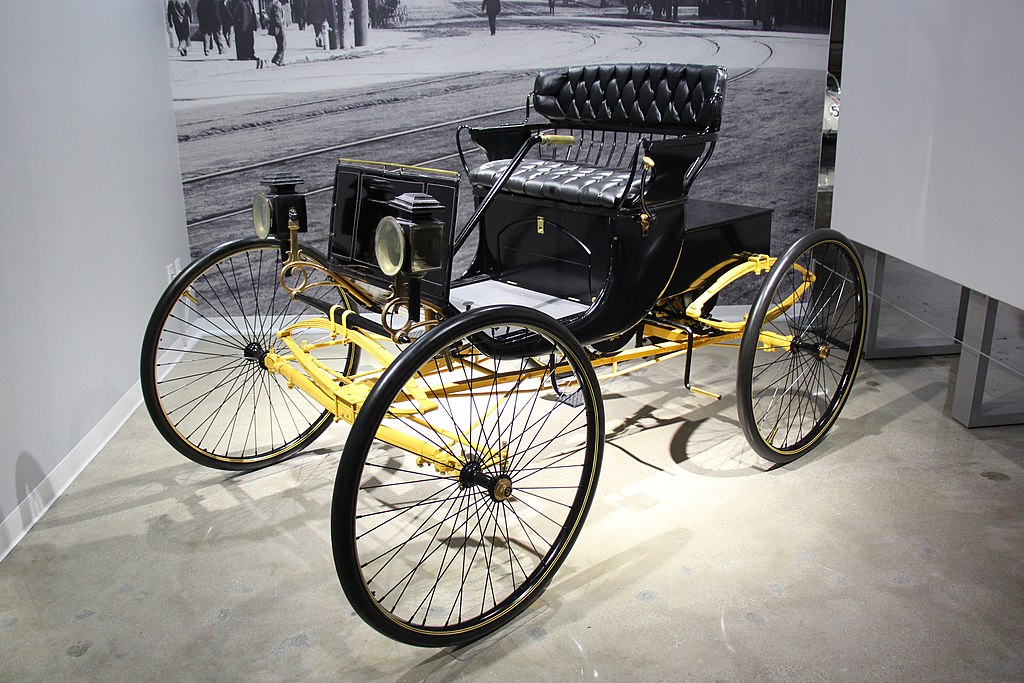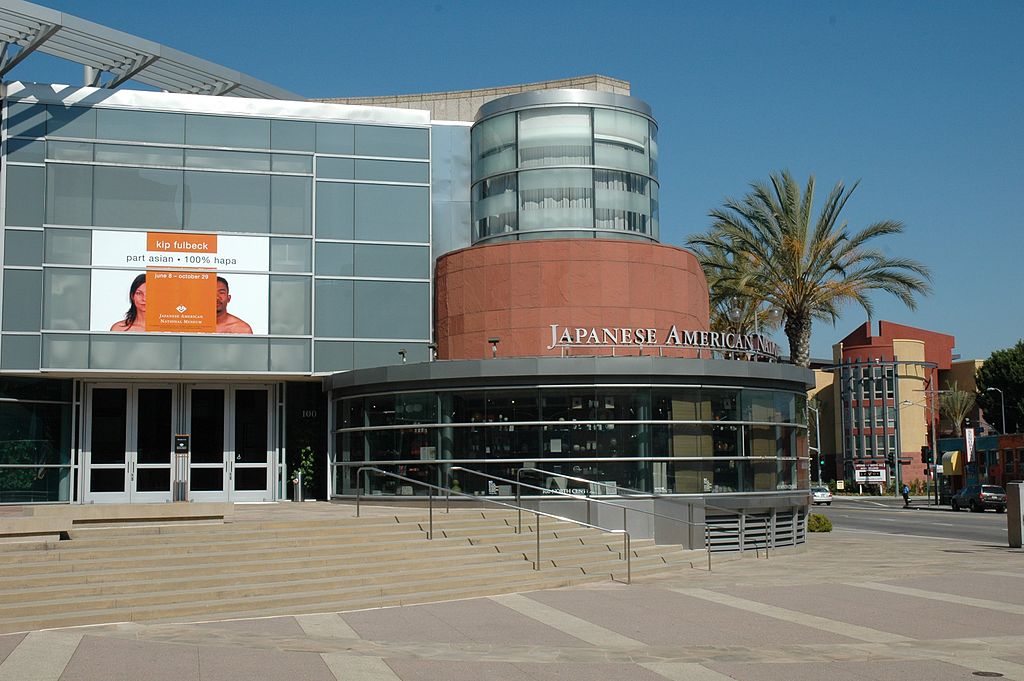
National Gallery of Ireland
“The Portrait of Doña Antonia Zárate” by the Spanish artist Francisco Goya is a portrait of the actress Antonia Zárate. It was produced in Goya’s studio, and it shows her wearing a fashionable black silk dress in the Empire style.
Fingerless white gloves cover her arms, she holds a closed fan, and a mantilla covers her head and shoulders.
Antonia Zárate was the daughter of an actor and director of a performing company. She continued in the family tradition as an actress and singer with success throughout Spain but mainly acted in the Spanish capital, where she became a friend of Francisco Goya.
This portrait was painted in 1805, and a second portrait was also painted in 1810-11, the face and hair are very similar.
However, the background and dress are very different. This second painting is now in the Hermitage Museum.
This first Goya masterpiece, painted in 1805, was stolen twice in the 1970s and then again in the 1980s from a private collector.
After the recovery in 1993, it was donated to the National Gallery of Ireland.
Mantilla
A mantilla is a traditional Spanish lace or silk veil worn over the head and shoulders, often over a high comb called a ‘peineta,’ popular with women in Spain. The shape, design, and use are different from an ordinary veil.
The lightweight ornamental mantilla came into use in the warmer regions of Spain towards the end of the 16th century, and ones made of lace became popular with women in the 17th and 18th centuries, being depicted in portraits by Diego Velázquez and Goya.
In the 19th century, Queen Isabella II actively encouraged its use. The practice diminished after her abdication in 1870, and by 1900 the use of the mantilla became limited mainly to formal occasions such as bullfights, Holy Week, and weddings.
Portrait of Doña Antonia Zárate
- Title: Portrait of Doña Antonia Zárate
- Spanish: Retrato de Doña Antonia Zárate
- Artist: Francisco de Goya
- Created: 1805
- Medium: oil on canvas
- Periods: Baroque
- Dimensions: H: 103.5 cm (40.7 in). W: 82 cm (32.3 in).
- Museum: National Gallery of Ireland, Dublin
“Portrait of Doña Antonia Zárate” – Hermitage Museum

“The Portrait of Doña Antonia Zárate” by the Spanish artist Francisco Goya is a portrait of the actress Antonia Zárate. It was produced in Goya’s studio, and it shows her wearing most likely an outfit from one of her performances.
Antonia Zárate was the daughter of an actor and director of a performing company.
She continued in the family tradition as an actress and singer with success throughout Spain but mainly acted in the Spanish capital, where she became a friend of Francisco Goya.
This portrait was painted in 1810 – 1811 and may have been derived from an earlier and larger picture painted in 1805.
The face and hair are very similar. However, the background and dress are very different. This second painting is now in the National Gallery of Ireland.
Portrait of Doña Antonia Zárate
- Title: Portrait of Doña Antonia Zárate
- Spanish: Retrato de Doña Antonia Zárate
- Artist: Francisco de Goya
- Created: 1810/11
- Medium: oil on canvas
- Periods: Baroque
- Dimensions: 71 × 58 cm (28 × 22.8 in)
- Museum: Hermitage Museum, Saint Petersburg
Goya The Portraits
Francisco Goya
Francisco José de Goya y Lucientes (1746 – 1828) was a Spanish painter and printmaker. He was the most important Spanish artist of the late 18th and early 19th centuries. Goya was famously successful in his lifetime, the last of the Old Masters and the first of the moderns.
He was born to a modest family in Aragon, Spain, and started the study of painting from the age of 14. He married at the age of 27, and after a series of pregnancies and miscarriages, only one child, a son, survived into adulthood.
Goya became the court painter to the Spanish Crown in 1786, and this early part of his career is marked by portraits of the Spanish aristocracy and royalty and Rococo style tapestry cartoons designed for the royal palace.
Goya suffered a severe illness in 1793, which left him deaf. Sick and disillusioned, his work became progressively darker and pessimistic. His later paintings, prints, and drawings seem to reflect a bleaker outlook.
In 1807 Napoleon led the French army into war against Spain. Goya remained in Madrid during the war, which appears to have affected him deeply.
Other works from this mid-period of his life include a variety of paintings concerned with insanity, mental asylums, witches, fantastical creatures, and religious and political corruption. He feared for both his country’s fate and his own psychological and physical health.
In Goya’s late period, he was disillusioned by the political and social developments in Spain, and he lived in near isolation. Goya eventually abandoned Spain in 1824 to retire to the French city of Bordeaux, accompanied by his younger maid and his companion.
Following a stroke that left him paralyzed on his right side and suffering failing eyesight, he died and was buried in 1828, aged 82. His body was later re-interred in Madrid.
Famously, however, Goya’s skull went missing, a detail the Spanish consul in France immediately communicated to his superiors in Madrid. The Spanish authorities wired back, “Send Goya, with or without a head.”
Francisco Goya
- Name: Francisco Goya
- Birth: 1746 – Fuendetodos, Aragon, Spain
- Died: 1828 (aged 82) – Bordeaux, France
- Nationality: Spanish
- Movement: Romanticism
- Masterpieces:
- The Third of May 1808
- The Repentant St. Peter
- Saturn Devouring His Son
- Portrait of Doña Antonia Zárate
- Portrait of Doña Isabel de Porcel
- The Second of May 1808 – The Charge of the Mamelukes
Goya: The Portraits
Highlights of the National Gallery of Ireland
- “The Taking of Christ” by Caravaggio
- “The Portrait of Doña Antonia Zárate” by Francisco Goya
- Hellelil and Hildebrand, the Meeting on the Turret Stairs by Frederic William Burton
- National Gallery of Ireland
A Virtual Tour of the Hermitage Museum
- “Madonna Litta” attributed to Leonardo da Vinci
- Composition VI by Kandinsky
- “The Portrait of Doña Antonia Zárate” by Francisco Goya
- “White House at Night” by Vincent van Gogh
- “The Three Graces” by Antonio Canova
- Egyptian Collection in the Hermitage Museum
- Gonzaga Cameo
- “Psyche Revived by Cupid’s Kiss” by Antonio Canova
- “The Stolen Kiss” by Jean-Honoré Fragonard
- “Boulevard Montmartre” by Camille Pissarro
- “Three Tahitian Women Against a Yellow Background” by Paul Gauguin
- “Conestabile Madonna” by Raphael
- “Struggle between Tiger and Bull” by Henri Rousseau
- “Landscape with Diana and Callisto” by Cornelis van Pulenburg
- “The Return of the Prodigal Son” by Rembrandt
- “Daedalus and Icarus” by Charles Le Brun
- Aphrodite Kallipygos
- “Waterloo Bridge. Effect of Fog” by Claude Monet
- “Napoleon during his campaign in Egypt” by Jean-Léon Gérôme
- “Memory of the Garden at Etten” by Vincent van Gogh
- “Boats on the Beach of Saintes-Maries” by Vincent van Gogh
- “Le Bassin du Jas de Bouffan” by Paul Cézanne
On Francisco Goya
Francisco de Goya Quotes
“Fantasy abandoned by reason produces impossible monsters.”
~~~
“The slumber of reason breeds monsters.”
~~~
“In art, there is no need for color;
I see only light and shade. Give me a crayon,
and I will paint your portrait.”
~~~
“I am beginning to have more powerful enemies and more envious ones, too.”
~~~
“I have had three masters, Nature, Velasquez, and Rembrandt.”
~~~
“The act of painting is about one heart telling another heart where he found salvation.”
~~~
“First, be a magnificent artist, and then you can do whatever, but the art must be first.”
~~~
“The act of painting is about one heart telling another heart where he found salvation. “
– Francisco de Goya
~~~
Photo Credit 1) Francisco de Goya [Public domain], via Wikimedia Commons
Top Posts & Pages








 Sponsor your Favorite Page
Sponsor your Favorite Page SEARCH Search for: Search Follow UsJoin – The JOM Membership Program
Become a Patron!
Sponsor a Masterpiece with YOUR NAME CHOICE for $5
Share this:
- Tweet
